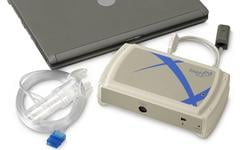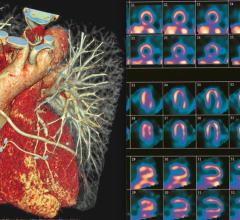
April 7, 2010 – A study concludes ventilator efficiency (VE/VCO2 slope) is more accurate than the current listing criteria for heart transplantation in identifying patients likely to derive a survival benefit from such intervention. The results were recently published in Circulation Heart Failure, a journal of the American Heart Association.
The study conclusions reinforce the science behind the Shape-HFTM Cardiopulmonary Exercise Testing system, which measures ventilation parameters including ventilatory efficiency. Cardiopulmonary exercise testing (CPX) has been used for many years to help doctors understand the severity and prognosis in patients with chronic heart failure. Peak CPX testing can guide physicians in their clinical decision-making, but conducting CPX tests at such levels comes with its own set of problems such as maximal physical effort by the patient, specialized training, and interpretation challenges.
A total of 663 chronic heart failure patients who underwent cardiopulmonary exercise testing were tracked for cardiac mortality and heart transplantation. Symptom-limited CPX testing was performed on all patients. Oxygen uptake (VO2), carbon dioxide production (VCO2) and minute ventilation (VE) were measured on a breath-by-breath basis. Peak VO2 was defined as the highest 20- to 30-second average achieved during exercise. Patients were evaluated for the occurrence of death or heart transplantation. Follow-up was right-censored at three years.
Results showed that using a VE/VCO2 slope threshold instead of the current exercise criteria would classify 39 more subjects as high-risk, correctly identifying 19 more patients who died during follow-up, and 16 others who underwent transplantation. VE/VCO2 slope provided significant discrimination between the three years survival of both high- and low-risk patients relative to post-transplant patients. Re-analysis of survival data using death or heart transplantation as endpoint showed similar results.
The Shape-HF System is the first gas exchange testing device specifically designed for cardiology. It measures a patient’s functional capacity and quantifies the severity of dyspnea on exertion. The test takes 15 minutes and involves measuring ventilation parameters while the patient exercises on a treadmill at a very low intensity. The test also quantifies the heart rate response to exercise to determine if it is appropriate and can unmask potential co-morbidities that may adversely affect heart failure prognosis or therapy response.
Shape-HF measures cardiopulmonary gas exchange quickly without undue strain on the patient. It can be used in the office setting and provides real-time physiological assessment to help physicians elucidate the physiological underpinnings of dyspnea, objectively assess patient functional classification, monitor therapy response and progress, identify potential comorbidities, and optimize cardiac resynchronization therapy at exercise levels consistent with patient daily activity.
For more information: http://circheartfailure.ahajournals.org


 January 23, 2024
January 23, 2024 








